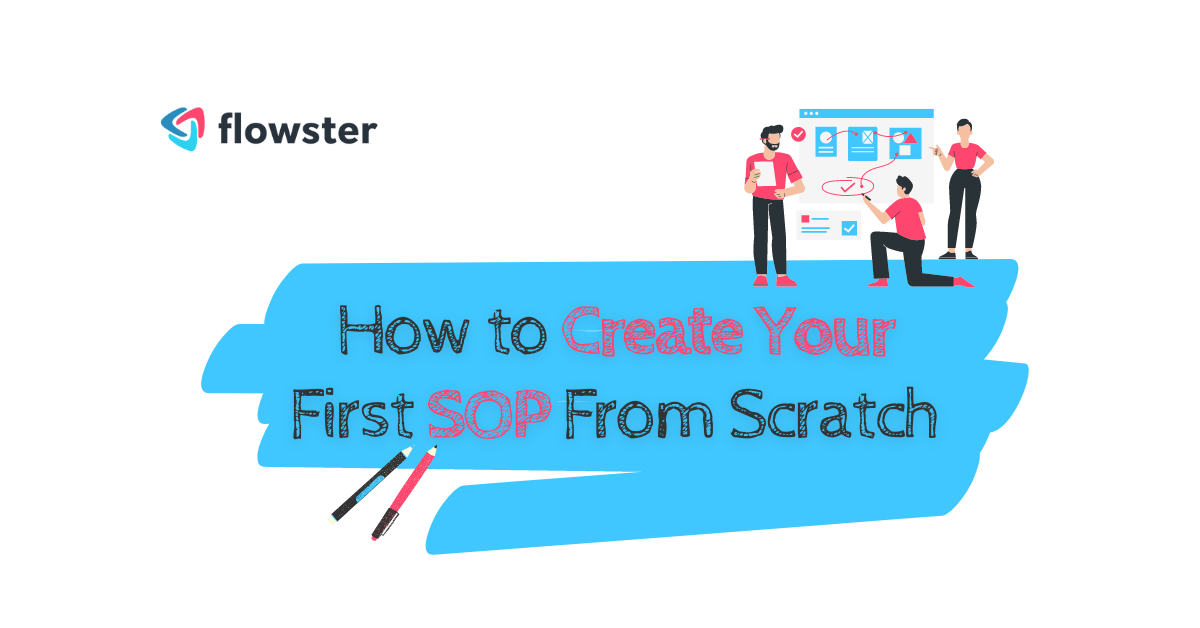If you are launching a new business venture or managing an existing business, Standard Operating Procedures (SOPs) may offer a solution for optimizing your operations.
So what is an SOP? SOPs give employees clear guidelines for performing daily activities. From routine tasks to complex processes, the SOP reduces errors and improves output.
Every business has specific processes for completing various tasks. Putting those processes in writing leads to consistent performance.
Use the following guide to discover the best techniques and strategies for creating an SOP from scratch.
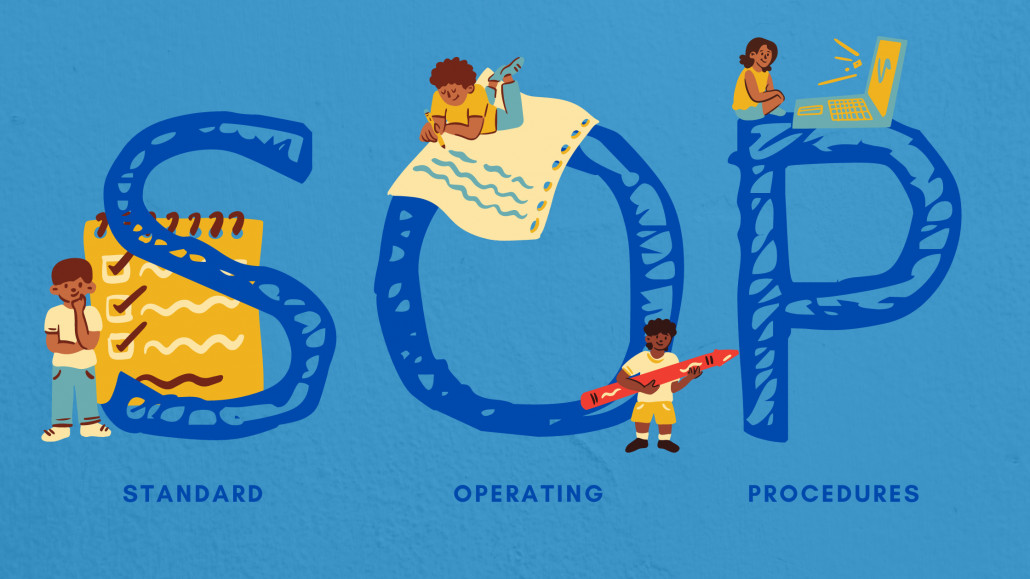
What Is an SOP?
A standard operating procedure (SOP) is a set of instructions used by employees to carry out different tasks. An SOP is a powerful tool for ensuring compliance with industry regulations and the company’s policies and best practices. It also increases the uniformity of performance and quality output.
Giving employees step-by-step instructions on how to perform routine operations helps maintain safety, productivity, and compliance. SOPs allow you to produce the same results over and over. You get predictable, consistent outcomes.
For example, when a customer purchases a product, you may have a series of processes designed to deliver the product quickly and reduce the risk of shipping errors. Formalizing those processes ensures that employees adhere to the same routine for each order.
Why Does Your Company Need an SOP?
SOPs typically explain the practices for each department in the organization. The SOP covers policies, standards, and procedures, ensuring that employees have a guide for dealing with different scenarios or specific tasks.
For example, cashiers in retail stores often have an SOP with detailed work instructions for dealing with returns, customer complaints, theft, and money shortages. With an SOP, cashiers and managers have guidelines for handling these issues while sticking to company policy.
Here are six of the top reasons why businesses of all sizes should develop SOPs:
- Maintain consistent operations
- Streamline performance management
- Limit the risk of knowledge loss
- Save on training costs
- Comply with industry standards
- Prepare for future growth
Keep in mind that the structure and complexity of the SOP depend on the organization. Businesses that rely on creative processes may need a looser structure compared to large organizations that rely on standardized rules.
Below is an example of a SOP for Optimizing a YouTube video.
Ensure Consistent Operations
One of the main uses of an SOP is to bring consistency to all types of business processes from standard daily operations to complex situations in real-time. An SOP template includes a set of instructions for various operational processes. Instead of needing to guess how to complete a given task, employees have strict guidelines.
Following standardized instructions helps your business maintain a higher standard. When you ensure that everyone follows the same procedures, you achieve greater consistency. This reduces the risk of mistakes and errors.
With consistent operations, you ensure that products and services are produced in the same way each time. Consistency also makes it easier to find room for improvement. If your products remain consistent, sales and customer satisfaction are tied to characteristics that you can analyze instead of manufacturing defects.
Streamline Management
Standardized procedures streamline employee evaluations. Managers can fairly evaluate the performance of each employee as they all follow the same procedures. This gives managers a set of standards for measuring the employee’s performance.
SOPs help to eliminate subjective assessments. This is especially useful in environments where employees are rewarded based on their performance.
Prevent Knowledge Loss
Some small businesses without SOPs may have a team of employees that focus on separate tasks. For example, one employee may handle shipping while another deals with online orders. If one of these employees leaves the company, the others may not know how to complete the same tasks. This is called knowledge loss.
SOPs help to prevent knowledge loss by formalizing each business process. If one employee leaves a company, other employees can cover the same duties. They have written rules for carrying out the tasks previously completed by the employee who left.
Reduce Training Costs
A set of written rules also helps reduce training costs. While an SOP does not eliminate the need for training at most businesses, it limits the time needed to bring new hires up to speed. For example, instead of demonstrating each task, a supervisor may have a trainee rely on the SOP to complete a task with minimal supervision.
Saving time and training costs allows supervisors and managers to focus on core processes. This brings increased efficiency without sacrificing the quality of training.
Maintain Compliance
One of the main uses of an SOP is to ensure compliance with statutory and regulatory requirements for your industry. Regulations may require employees to follow existing procedures.
Industry standards deal with design and safety requirements for specific products or activities. Agencies such as the American National Standards Institute (ANSI) and Occupational Safety and Health Administration (OSHA) help set these standards in the United States.
The SOP may cover some of these standards while including additional steps to meet the organization’s standards. Instead of meeting industry expectations, you may try to exceed them.
Facilitate Future Growth
SOPs also provide a framework for future growth in new markets or regions. An SOP allows you to easily replicate existing processes at new locations.
If you plan on expanding to a new region, an SOP reduces the time needed to get the new location running. The employees at the new location will continue to follow the same procedures as employees at your original location. This ensures that your products or services continue to meet your best standards.
How to Create Standard Operating Procedures
Creating an SOP requires planning and careful analysis before you start writing detailed instructions. The step process typically includes the following steps:
- Create a list of processes
- Select a format for your SOP
- Review all business processes
- Break each process into steps
- Implement the procedures
- Analyze and improve your SOP
Before starting, ensure that your organization has a clear vision and specific, measurable goals. The vision of your organization helps inform the development of standard procedures. As you review procedures, you may also find ways to improve business processes to reach your goals.
Your business may even need multiple SOPs for different departments. For example, a marketing department may require more freedom for completing its tasks. A human resources team is more likely to need to follow specific guidelines to ensure compliance with labor laws.
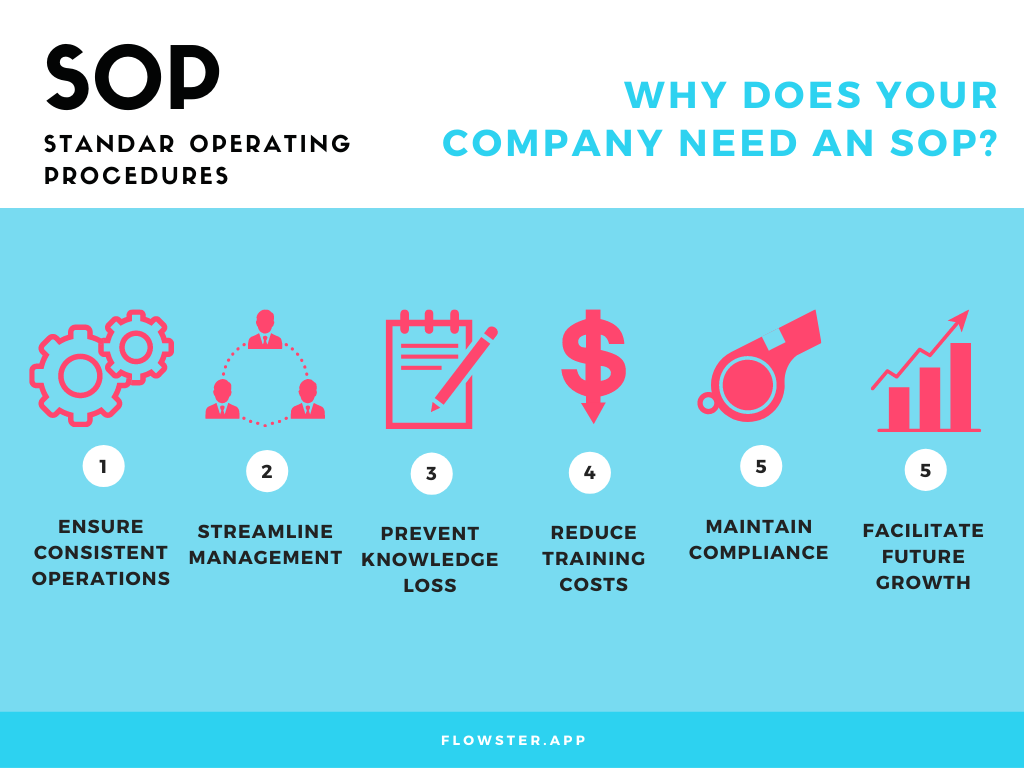
- Create a List of Business Processes
The first step in drafting an SOP is to compile a list of all business processes that you want the report to cover. A business process includes steps taken by employees or team members to reach some type of business objective. The objective may be producing a product, shipping items, or hiring a new employee.
Each department has its individual processes. In most cases, these processes need to be repeatable and ensure the same outcome each time. This is especially true in manufacturing, where each assembled product needs to be identical.
Without specific processes, no two products would turn out the same. Create a list of these processes and divide them into categories for each department.
- Select a Format for Your SOP
The format for your SOP manual depends on the needs of your business and operating style. The two main options include following a structured format or unstructured format.
Structured formats include the ISO 9000 family of quality management systems. With an unstructured format, you create a procedural document containing instructions based on your business processes.
When you need employees to follow specific steps for completing tasks, it helps to have procedure documents containing detailed instructions. Each process may require detailed explanations with multiple steps and what/if scenarios.
In a creative setting, an SOP should provide an informal set of guidelines for completing tasks. Instead of strict rules, employees have the freedom to use their creativity and problem-solving skills. Here is a closer look at the different approaches to writing an SOP.
ISO 9001: SOP formats vary depending on the needs of the organization. The most used format is the ISO 9000 series. Originally developed in 1987, ISO 9000 is used by over a million organizations across the globe.
The ISO 9000 family includes standards for meeting statutory and regulatory requirements. ISO 9000 explains the principles of those standards while ISO 9001 discusses the requirements for meeting the standards.
ISO 9001 is a generic SOP suitable for a wide range of organizations. However, various industries have developed custom interpretations. Industry-specific SOPs are available for the medical industry, automotive manufacturers, computer software, and more.
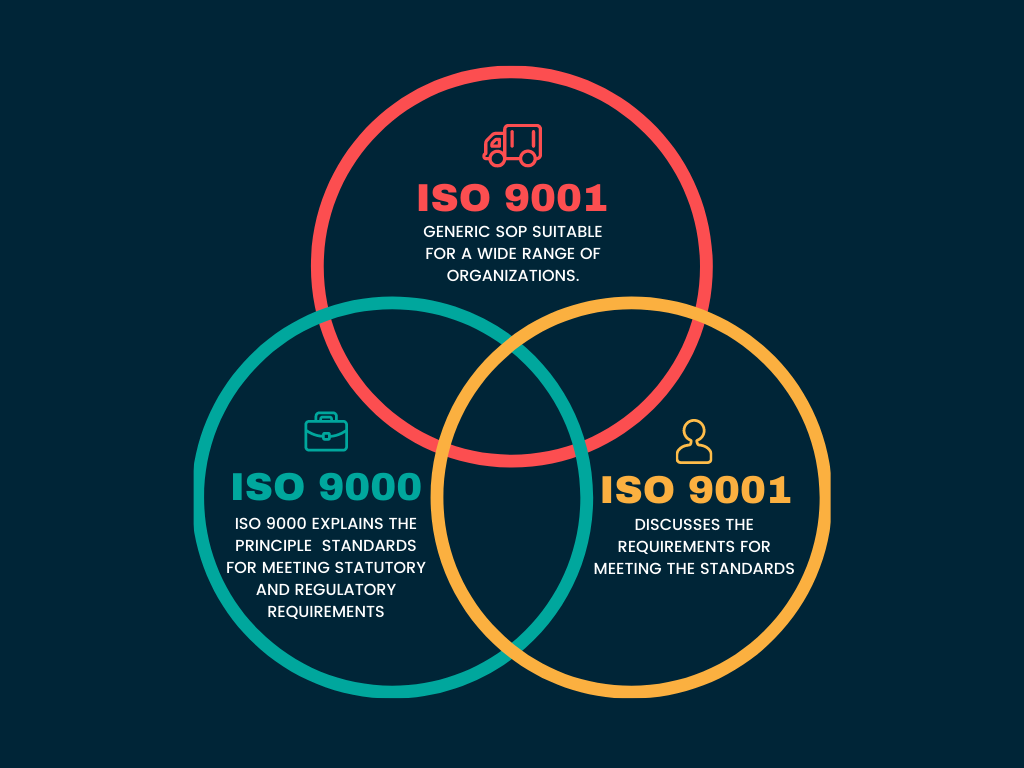
Checklist: Smaller businesses and creative agencies such as design firms may not need a strict SOP. Instead of the heavily structured ISO 9001, your organization may use a simple checklist.
Startups and individual entrepreneurs may also prefer the simplicity and flexibility of a checklist. A checklist simply includes a brief headline for each step in a process.
For example, a creative agency may use the following checklist for the project management process:
- Record the idea or concept
- Create a project plan
- Outline the required resources
- Set a timeline
- Set a project budget
- Receive approval
- Develop the project
- Launch the project
- Monitor key performance indicators (KPIs)
This checklist offers a simple structure for completing a project. The flexibility of this checklist allows the team to maintain creativity without skipping necessary steps.
Detailed Checklist: If a simple checklist is too broad, your business may benefit from a detailed checklist. Instead of using a bulleted to-do list, you create sub-checklists with written instructions for complex tasks.
Some processes may include the basic to-do list while others require employees to drill down to find more detailed instructions.
Flow Diagrams: Flow diagrams are useful for tasks that involve multiple variables and outcomes. You may need employees to follow different sets of instructions based on the outcome of a previous step.
For example, a customer service representative may need to follow different instructions depending on the nature of the customer inquiry.
A flow diagram, or flowchart, includes step-by-step instructions with multiple paths. An employee starts at one point in the diagram and proceeds based on different variables.
When trying to resolve a computer problem, a technician may ask if you have tried turning the computer off and on again. If you have completed this step, the flow diagram explains the next step.
- Review All Business Processes
After creating a list of business processes and choosing a format, begin reviewing each process. Talk to the employees who perform these processes to receive first-hand input. Your employees may have adopted their own methods for completing certain tasks.
Review the processes with employees, managers, and stakeholders. Remove any redundant policies and ensure that you cover policies related to industry standards.
- Break Each Process Into Steps
Start breaking each process into individual steps. If using a flow diagram, remember to consider all the variables involved in the process.
Use computer software to outline the process and start fleshing out your SOP. As you break the processes into multiple steps, create your checklists or flow diagrams.
- Implement the Procedures
With the first draft of your SOP completed, you can begin implementing the written procedures. Distribute the SOP to everyone within the organization.
Keep in mind that some employees may struggle to adopt new business practices or routines. If the processes vary compared to existing processes, you may need managers to enforce adherence to the new rules. It may take a while for organization-wide adoption of the new policies.
- Analyze and Improve Your SOP
After implementing the SOP, continue to monitor adherence. Ensure that employees are following the procedures and then continue to analyze the impact of the SOP on each business process.
SOPs should be updated at least once a year. Updating the SOP too frequently leads to confusion and limits adherence. If the steps needed to complete tasks keep changing, employees will revert to their old processes.
Schedule quarterly meetings with managers and supervisors to review the success of the new procedures. You should also continue listening to feedback from employees to improve the processes outlined in your SOP.
Tips for Creating an Effective SOP
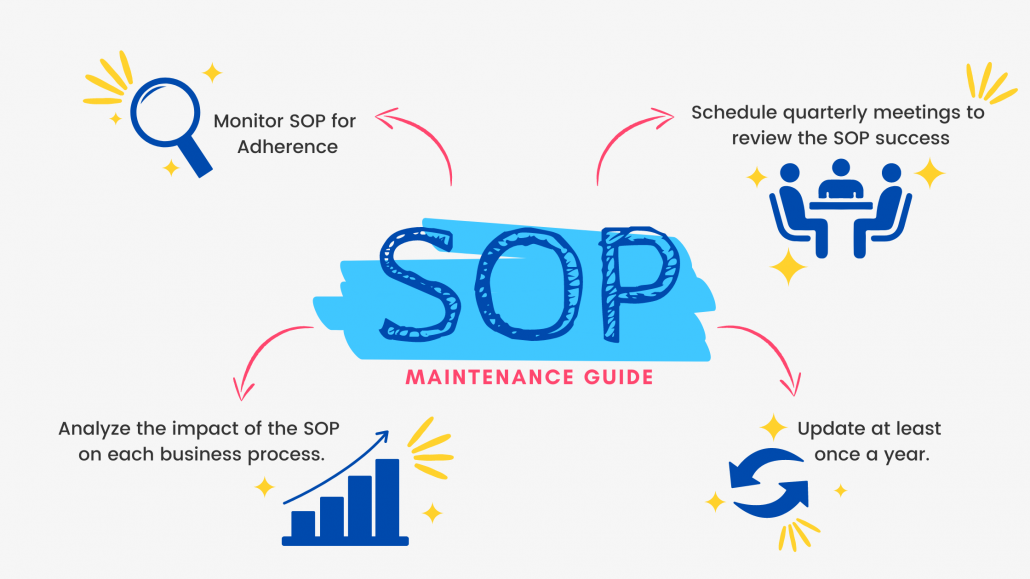
Along with the step-by-step procedures discussed for creating an SOP, use the following tips to increase its effectiveness:
Use Understandable Wording
An SOP is not a technical paper with complex jargon. It should offer straightforward explanations. It is the job of the person drafting the SOP to ensure that employees can follow the instructions.
While some of the processes may involve complex technical requirements, the SOP may not need to include these requirements. The SOP should focus on the actionable steps needed to complete a task.
Keeping the SOP simple also makes it easier for new employees to grasp the procedures. If the instructions are clear and direct, new hires may spend less time learning how to complete their responsibilities.
Create Multiple SOPs for Different Departments
If you have a large organization or a small business with multiple teams, consider creating multiple SOPs. Each team or department should have its own set of procedures.
Separating the SOPs for each department also allows you to address the needs of each area of your business. Your marketing team may not need to read the procedures used by the team that handles shipping and logistics.
Maintain a Consistent Style
Your SOP may include dozens of business processes. Maintain a consistent style throughout the entire document. Following a consistent style makes it easier to provide clear instructions.
The document should be concise and scannable. If it contains large blocks of text, employees may overlook some of the steps.
Set Metrics for Analyzing the Success of the SOP
An SOP requires continual improvements as your business processes require continual improvement. To analyze the success of the processes outlined in your SOP, set the metrics that you want to track.
For example, if you are creating an SOP for an assembly line, you may track manufacturing cycle time, throughput, capacity utilization, and yield. Monitoring these metrics helps you determine whether the procedures in your SOP have increased or decreased efficiency.
If efficiency has decreased, you can use the SOP to determine which processes are creating a bottleneck. Review each step and work with employees and supervisors to find ways to improve results.
Last Thoughts on SOPs
SOPs help align the purpose and strategic direction of an organization. If you want employees to follow a set of instructions, write them down and distribute them to everyone.
An SOP is simply a set of step-by-step instructions. The structure of the SOP documentation and the processes that it covers depends on the needs of your company.
If you need to meet industry standards or specific legal requirements, you may need a structured SOP. Smaller businesses and startups may prefer an unstructured SOP with simple instructions and guidelines that provide greater flexibility.
No matter the format, your SOP only becomes effective when employees follow the instructions. Explaining the benefits of the procedures and why they matter may increase the adoption of new policies.
Continue to monitor how the SOP impacts your business processes and find ways to improve your instructions to boost efficiency.
Write the Best SOPs for Your Business
The importance of Standard Operating Procedures cannot be understated. Whether you’re running a small company or a large corporation, SOPs will help streamline your processes and make them more efficient.
This article about How To Write the Best Standard Operating Procedures (SOPs) for Your Busines will show you how to create SOPs that are easy to follow, simple to update, and will produce the best results possible for your business.
Want a Shortcut to Your First SOP?
Check out the SOP templates available in Flowster’s Marketplace.
Jump in with templates you can use out of the box, or customize them to meet your needs. (No time to customize? Take advantage of our Done For You service and have us build custom SOPs from scratch.)
